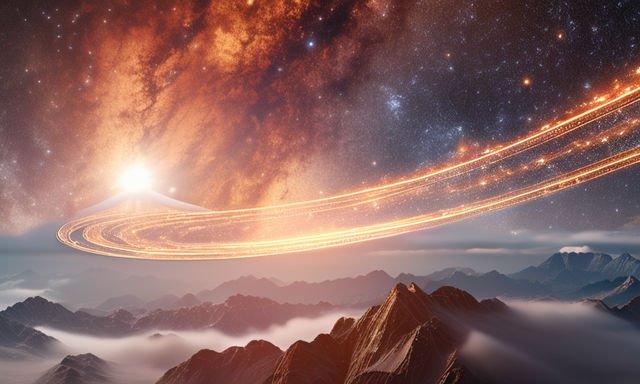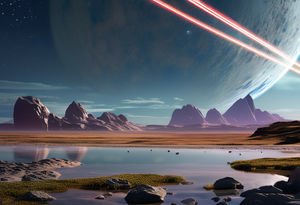Andromeda launches stars at hypervelocity towards us [EN/PT]
Andromeda launches stars at hypervelocity towards us

A team of scientists from Germany and the United Kingdom have discovered that the neighboring Andromeda galaxy is launching stars at hyperspeed, some of which are heading in our direction, into our Milky Way galaxy.

These stars are the first effect of the colossal event that will lead to the merger of the two galaxies Andromeda and the Milky Way, something that will culminate in about 4,000 million years. These stars reach these enormous speeds because they are stars that either passed very close to a black hole or that are part of a pair or trio of stars and ended up being ejected at high speed.

The next star that will visit us will be Gliese 710, it is a star with just over half the mass of the sun, which is a very respectable size. It is currently about 62 light years away, but in 1,300,000 years. There are several studies that place it at between 0.65 and just one light year away.
Thank you for visiting my blog. If you like posts about #science, #planet, #politics, #rights #crypto, #traveling and discovering secrets and beauties of the #universe, feel free to Follow me as these are the topics I write about the most. Have a wonderful day and stay on this great platform :) :)
Em português
Andrômeda lança estrelas em hipervelocidade em nossa direção

Uma equipa de cientistas da Alemanha e do Reino Unido descobriu que a vizinha galáxia de Andrómeda está a lançar estrelas em hipervelocidade, algumas das quais se dirigem na nossa direção, para a nossa galáxia, a Via Láctea.

Estas estrelas são o primeiro efeito do evento colossal que levará à fusão das duas galáxias Andrômeda e a Via Láctea, algo que culminará em cerca de 4.000 milhões de anos. Essas estrelas atingem essas velocidades enormes porque são estrelas que ou passaram muito perto de um buraco negro ou fazem parte de um par ou trio de estrelas e acabaram sendo ejetadas em alta velocidade.

A próxima estrela que nos visitará será Gliese 710, é uma estrela com pouco mais da metade da massa do Sol, que tem um tamanho muito respeitável. Atualmente está a cerca de 62 anos-luz de distância, mas daqui a 1.300.000 anos. Existem vários estudos que o situam entre 0,65 e apenas um ano-luz de distância.
Obrigado por visitar meu blog. Se você gosta de posts sobre #ciência, #planeta, #política, #direitos #cripto, #viajar e descobrir segredos e belezas do #universo, fique à vontade para me seguir, pois esses são os assuntos sobre os quais mais escrevo. Tenha um dia maravilhoso e fique nesta ótima plataforma :) :)
0
0
0.000
Truly space and the known universe is amazing, too bad we can't survive out there to get a closer look at the light show.
Thanks for your contribution to the STEMsocial community. Feel free to join us on discord to get to know the rest of us!
Please consider delegating to the @stemsocial account (85% of the curation rewards are returned).
You may also include @stemsocial as a beneficiary of the rewards of this post to get a stronger support.
Obrigado por promover a comunidade Hive-BR em suas postagens.
Vamos seguir fortalecendo a Hive